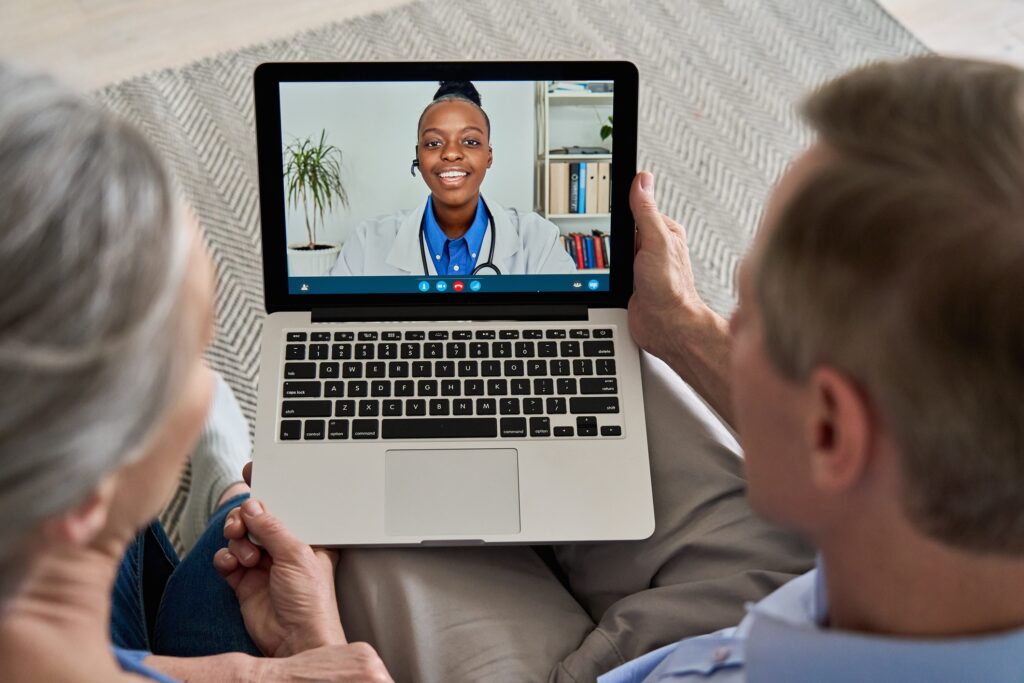Here is Your Guide to Master Patient Engagement
The healthcare industry is transitioning to the experience economy. Patients today judge medical practices not just by quality of care but also by the communication, guidance, and empathy they receive along the way. That’s why optimizing patient engagement is now a top area of focus for forward-thinking medical providers they are increasingly committed to the concept of patient-centered care.

What Is Patient-Centered Care?
Receiving medical treatment is no longer a one-way street where providers issue treatment suggestions and patients follow them. Instead, more and more providers are choosing to work closely with their patients to gain a better understanding of their patients total lifestyle goals and needs so they can treat the whole patient.
Patient engagement is a strategy that prioritizes communication, empathy, and cooperation between patients and providers.
This is part of a much larger trend that’s impacting all industries. Consumers are becoming increasingly empowered and demanding in their daily interactions and it’s having a profound impact on the way all organizations approach business, including healthcare providers.
According to one study, 7 in 10 patients want their healthcare experiences to be comparable to the way they interact with consumer-facing brands. What’s more, 68 percent of patients said their healthcare providers need to improve how they interact with patients.
Medical providers and practices hear these messages loud and clear which is why more and more are incorporating a patient engagement strategy.
What Does Patient-Centered Care Entail?
Now that you have a better idea of what patient-centered care is, let’s take a look at some of its core elements.
Collaborative treatment
Patient-centered care is highly collaborative, with providers and patients discussing various treatment options and sharing ownership of the decision-making process. The goal is to provide the right care at the right time and have patients engaged to help determine their specific course of action.
In the past, a provider might recommend a pill to control a skin condition and write a prescription. In a patient-centered environment, providers go over a number of different treatment options and get a better sense of what direction the patient wants to take their care. Based on these discussions, the provider and patient would come to an agreement on how best to proceed.
Family involvement
When practices deliver patient-centered care, family members often become an extended part of the medical decision-making team. It’s not uncommon for loved ones to sit in on consultations and help make key decisions along the way.
To illustrate, imagine a provider is treating a patient for cancer. In a patient-centered strategy, the family plays an active role in facilitating daily care and treatment. This might include providing transportation to medical facilities, enforcing dietary restrictions at home, and helping the patient cope with their condition.
Full transparency
In today’s real-time world, patients expect immediate access to information. The longer patients and their loved ones have to wait for healthcare information, the more anxious everyone becomes which negatively impacts the patient experience.
Patients today increasingly expect immediate access to medical data and reports as soon as they’re available. This is one of the reasons why patient-centered care is rooted in transparency and making important data available right away. When medical practices get information into the hands of patients and family members quickly, reliably, and securely, all parties benefit.

Why Is Patient-Centered Care Important for Private Practices?
The shift to patient engagement care can require a bit of an adjustment in practice strategy. But, the change is absolutely worth it, since patient-centered care can have a transformative impact on a practice’s overall operations.
For starters, patients benefit from improved satisfaction and a heightened level of awareness and participation. At the same time, shifting to patient-centered care can also have significant patient engagement benefits for your practice. Working more closely and collaboratively with patients ultimately leads to better treatment and improved health outcomes. This, in turn, allows providers to take on new patients which leads to healthier profitability.
On top of this, patient-centered care benefits staff members by helping them connect with patients and family members on a deeper level. As the process becomes more collaborative, employees experience key learning and engagement opportunities.
Tips and Strategies for Delivering the Best Patient Experience Possible
Because your practice is unique, there isn’t a single formula to follow for patient-centered care. The concept is still evolving as new trends arise and emerging technologies come to market.
With that in mind, here are a few tips and strategies that you can use to develop a patient-centric strategy and deliver better patient experiences.
Communicate via text messages
If your practice is still communicating with patients over the phone and through the mail, it’s probably time to upgrade your practice’s capabilities. Talk to your patients where they live and do business.
For example, you can use modern communication tools that offer secure texting to instantly connect with patients and staff members. Not only can texting streamline patient reminders, it can also make it easy for customers to ask questions and interact with staff members on their schedule.
According to one benchmark report, communicating via SMS which is easy to use, affordable, and efficient helps improve patient medical compliance and appointment reminders. Why not incorporate this strategy into your business model?
Market your medical practice
To keep your patients in the loop, share the latest services, updates, and technologies available to them at your facility.
One easy way to do this is by using Broadcast, a patient communication solution that enables you to message large groups of patients for treatment and diagnosis updates.
For example, an ophthalmology clinic could create a broadcast to alert patients about a new type of treatment for dry eyes. The facility could send this alert out to a group of patients who have specifically complained about dry eyes during previous visits.
Similarly, a practice might decide to send out a mass mailing to all patients that details new telehealth services.
Move to electronic forms
If your practice is still running on paper forms and you require patients to fill out the same documents over and over again it’s highly probable that your patients don’t like this practice.
Luckily, there’s an easy fix here: Investing in a purpose-built digital forms solution enables secure, HIPAA-compliant data entry from any desktop or mobile device.
With the right solution in place, your practice can reduce manual data-entry errors, increase convenience for patients and staff, and decrease paper consumption which leads to considerable cost savings and a more sustainable future.
Reimagine the Patient Engagement Experience with Updox
From the outset, implementing a patient-centered care strategy might sound like a big ordeal. But with the help of a proven patient experience enabler like Updox, the process is a breeze.
Updox is a leading provider of telehealth video, texting, : HIPAA-Compliant eFax, and online forms solutions. All these tools are easily accessible from the Updox Communication Platform, a one-stop-shop for managing patient workflows which makes it that much easier for your practice to become truly patient-centric.
To learn more about how these tools can help your office to better engage with patients, read our free ebook: Humanizing Healthcare with Virtual Care!





